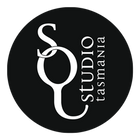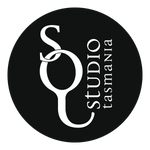Last August, Sally and I left our home in Tasmania for a two week trip to India with our Eco partners. The most significant takeaway from this trip (and believe me, there were many eye-opening moments) was water!!!
Water... was the most discussed resource in the Eco textile industry in India - or rather, the lack of it!
So here’s the thing that left Sally and I absolutely gobsmacked! One of the top factory CEOs in India took an hour out of his busy schedule to talk with us. Educated in America, he returned to India to lead his family’s large factory. He talked about water being the industry's biggest concern, noting that the current levels of water consumption are unsustainable. His research revealed that countries like China, are so aware of the declining water table, that they are outsourcing high-water-use industries like rice farming and textiles to poorer countries to avoid depleting and polluting their own water resources. Now... if that doesn’t make you stop and listen, I’m not sure what will!
While we often hear about the impacts of the fashion industry on the climate, the fashion industry’s impact on water receives less attention but it's the MOST critical. As we are all aware, water is a vital resource for life, and the pollution resulting from clothing production not only harms the environment and human health but also further depletes our already limited supply of drinking water.


Overall, fashion is one of the most water-intensive industries, consuming over 79 trillion litres annually as of 2020. The impact goes beyond just water use; clothing production also generates significant pollution with serious and widespread consequences.
Why do we use digitally printed fabrics?
The method of Inkjet digital printing on greige fabrics is the most advanced and eco-friendly printing processes available today. Other than looking amazing and able to capture vivid bright steadfast colours with precision, the Konica certified eco inks are safer than other forms of printing. Our production exclusively uses digital printing in our textile production as it allows for the use of eco-friendly certified inks and most importantly uses up to 70% less water than traditional methods of printing. Given that water is a critical resource we must conserve, we are committed to minimising water usage in everything we do.
Why we choose linen?
Linen is the ultimate in sustainability because the ENTIRE flax plant can be woven and used. This means that linen production is almost zero waste. Even better when choosing organically grown and digitally printed it also means that there is no water pollution! Plus, linen is 100% renewable fibre.
Flax grows quickly in poor quality soil, relies less fertilisers and uses a whopping 60% less water than traditional fibres like cotton.



Certified organically grown fibres are better, why?
They are grown without the use of any synthetic pesticides or fertilisers. Organically grown fibres naturally have a softer hand feel, are less scratchy, and are less likely to cause skin irritation.
Fun Fact: Organically grown fibres are longer and stronger than non-organically grown fibres, making them more durable.
Organically grown fibres have a much lower impact on our environment because they do not involve harmful chemicals. This benefits both those growing the fibres and the end consumers who enjoy chemical-free garments.
For example, in India, the world's largest producer of organic cotton, farmers in the Madhya Pradesh region have reduced their climate impact by 50% by switching to organic cotton farming methods! 50%!
By avoiding synthetic pesticides and fertilisers in the most damaging industry in the world (the fashion industry), we are making a huge difference to natural biodiversity and our long-term health.
Organic fibre production has broader environmental benefits. Most importantly, it helps to reduce water pollution and also lowers greenhouse gas emissions by promoting healthier soil that sequesters carbon.



